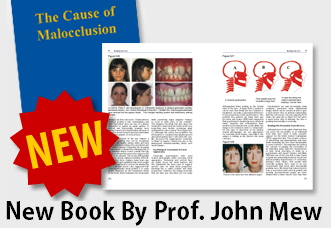
Information for Public
Orthotropic treatment is significantly different from any other form of orthodontic treatment, and should not be confused with functional appliance therapy. By definition Orthotropics aims to correct the pattern of facial growth, which is achieved by affecting the causes of the problem.
Contemporary orthodontics developed from the observation that teeth were crooked and that appliances could be used to align them. This usually occurs at around 11 to 13 years of age, once all the teeth have erupted and are present in the mouth, since the aim is not to prevent but correct, the teeth have to be present to be corrected. The teeth are movedusing mechanical forces usually from fixed brace and large discrepancies in the position of the bones are achieved using surgery. This frequently involves the loss of teeth (especially wisdom teeth) to provide space for the remaining teeth, sometime expansion, (or other methods [link-alternatives to orthodontic extraction in “to extract of not”], are used to provide more space for the teeth. The treatment is effective in the majority of cases and after treatment retainers are usually needed indefinitely. Side effects such as the lengthening of the facial complex are routine.
Functional Appliances. These are often used slightly earlier than fixed appliances, during the growth spurt, usually with the aim of moving lower jaws forwards by holding the lower jaw forward. With the exception of the Frankel appliances, these appliances pull the lower jaw forward by pulling back on the upper jaw, with a mechanical action. It is normal after functional treatment to use fixed appliances.
Orthotropics therapy aims to correct the growth of the face and jaws, by affecting the most likely causes (the muscle tone, posture and function). The aim is to promote a relatively more horizontal growth, normalizing the shape of the facial skeleton and providing space for the teeth to align naturally and the tongue to come up out of the airway giving the individual the opportunity to normalize their oral, head and neck posture, and breathing. The disadvantage of Orthotropics is that it requires considerable co-operation from the patient and support from their parents, as a good result will depend on the child learning to keep their mouth closed, and swallowing with their tongue on their palate. After treatment retention is not necessary for a lesson learnt is a lesson learnt forever.

